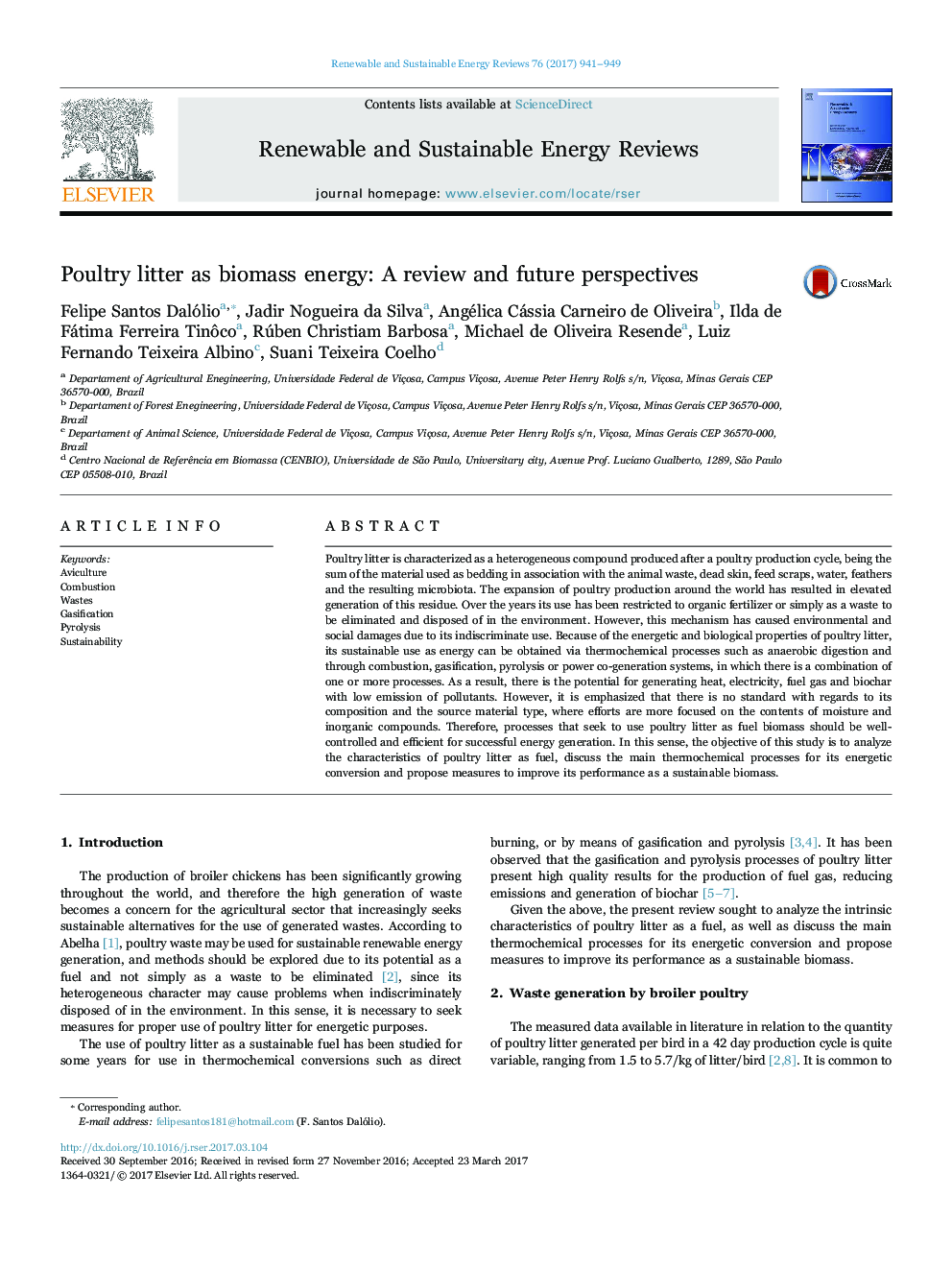| Article ID | Journal | Published Year | Pages | File Type |
|---|---|---|---|---|
| 5482203 | Renewable and Sustainable Energy Reviews | 2017 | 9 Pages |
Abstract
Poultry litter is characterized as a heterogeneous compound produced after a poultry production cycle, being the sum of the material used as bedding in association with the animal waste, dead skin, feed scraps, water, feathers and the resulting microbiota. The expansion of poultry production around the world has resulted in elevated generation of this residue. Over the years its use has been restricted to organic fertilizer or simply as a waste to be eliminated and disposed of in the environment. However, this mechanism has caused environmental and social damages due to its indiscriminate use. Because of the energetic and biological properties of poultry litter, its sustainable use as energy can be obtained via thermochemical processes such as anaerobic digestion and through combustion, gasification, pyrolysis or power co-generation systems, in which there is a combination of one or more processes. As a result, there is the potential for generating heat, electricity, fuel gas and biochar with low emission of pollutants. However, it is emphasized that there is no standard with regards to its composition and the source material type, where efforts are more focused on the contents of moisture and inorganic compounds. Therefore, processes that seek to use poultry litter as fuel biomass should be well-controlled and efficient for successful energy generation. In this sense, the objective of this study is to analyze the characteristics of poultry litter as fuel, discuss the main thermochemical processes for its energetic conversion and propose measures to improve its performance as a sustainable biomass.
Related Topics
Physical Sciences and Engineering
Energy
Renewable Energy, Sustainability and the Environment
Authors
Felipe Santos Dalólio, Jadir Nogueira da Silva, Angélica Cássia Carneiro de Oliveira, Ilda de Fátima Ferreira Tinôco, Rúben Christiam Barbosa, Michael de Oliveira Resende, Luiz Fernando Teixeira Albino, Suani Teixeira Coelho,
